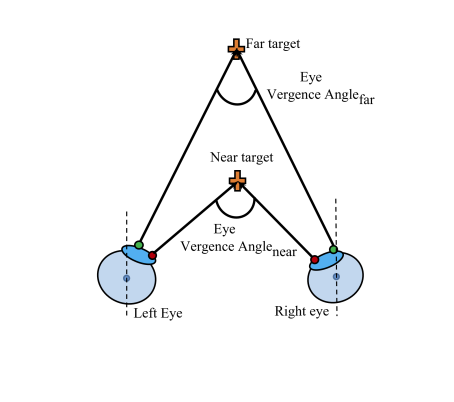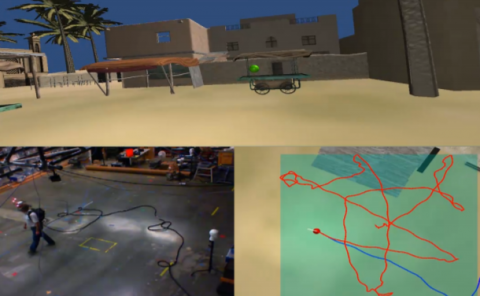Mapping Eye Vergence Angle to the Depth of Real and Virtual Objects as an Objective Measure of Depth Perception
PubDate: Nov 2023
Teams: Colorado State University;Mississippi State University
Writers: Mohammed Safayet Arefin, J. Edward Swan II, Russell Cohen Hoffing, Steven Thurman

Abstract
Recently, extended reality (XR) displays including augmented reality (AR) and virtual reality (VR) have integrated eye tracking capabilities, which could enable novel ways of interacting with XR content. The vergence angle of the eyes constantly changes according to the distance of fixated objects. Here we measured vergence angle for eye fixations on real and simulated target objects in three different environments: real objects in the real-world (real), virtual objects in the real-world (AR), and virtual objects in the virtual world (VR) using gaze data from an eye-tracking device. In a repeated-measures design with 13 participants, Gaze-measured Vergence Angle (GVA) was measured while participants fixated on targets at varying distances. As expected, results showed a significant main effect of target depth such that increasing GVA was associated with closer targets. However, there were consistent individual differences in baseline GVA. When these individual differences were controlled for, there was a small but statistically-significant main effect of environment (real, AR, VR). Importantly, GVA was stable with respect to the starting depth of previously fixated targets and invariant to directionality (convergence vs. divergence). In addition, GVA proved to be a more veridical depth estimate than subjective depth judgements.



